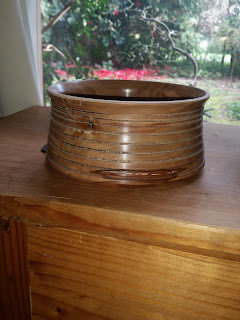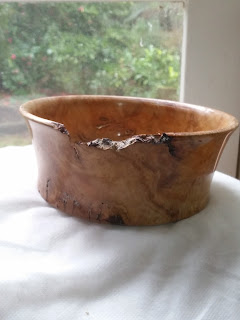Learning the Turning #16
Skipping the Busted Bits
A bit of Huon Pine
In 1616 AD, Officials in Württemberg charge astronomer Johannes Kepler with practicing "forbidden arts" (witchcraft). His mother had also been so charged and spent 14 months in prison. (Wikipedia).
About the same time, the tree that this bowl came from was a healthy seedling. Huon Pine is like that. Grows only in Tasmania, and it's one of the hardest "softwoods" I've ever encountered. Turns beautifully. Takes the term "slow growth" to extremes, though, and I treat it with respect.
The lighting was the same in both shots, each with the bowl turned 90 degrees from the other, and indeed it does look like two entirely different bowls. The colours approximate what I see, too. The view from where a bit of "live edge" is showing (bark showing, considered a bit trendy among turners. I don't know, just think it's pretty) is quite a bit lighter.
This one has a wax finish, and for the first time I've used John Sawyer's hint of using handfuls of wood shavings to burnish and melt the wax in. I like the idea, and there's no shortage of wood shavings on the floor.
The large, expensive and troublesome Blackwood blank that sang the end of the banjo posted previously, failed due to a very brittle edge, and the fact that the blank was so out of balance I could never get it round enough to make a straight starting cylinder. Different densities within the wood. I also found it a bit disconcerting trying to turn with the lathe trying to walk around the workshop as I worked.
So this is bowl #16. Blank #15 is having its number retired, in gratitude to the rather expensive lessons I learned from it. No photos of #15, it's in the bin.


































